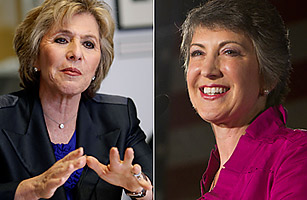All quiet on the western front: Boxer vs. Fiorina a surprisingly calm race

With the Boxer-Fiorina race continually veering between a toss-up and a slight Democratic leaning, the battle for who will be California’s next junior Senator should be heating up at a rate which could place it in comparable company with races such as the negativity-laden Illinois Senate Race and the acrimonious Ohio Gubernatorial Race, to say nothing of some of the more nasty crossfire which has recently begun percolating in the Governors’ race at home in California.
But it isn’t. Fiorina and Boxer have developed their public images and, indeed, had the chance to refine contrasts between themselves – so seemingly, all that remains now is for the barbs to fly, the independent groups to be courted, and the October surprises to come. Yet, while there has already been a good deal of the first, and a lot of the second, there has been surprisingly little of the last.
The high volume of interest group pushing is nothing new this close to an election. Currently, most of the interest group-motivated negativity currently running through the race is coming from Boxer’s side, but this is definitely temporary, seeing as this late in the race, new attacks are almost always being churned out as the last few independent voters are shifted into various columns, usually more by means of the stick than by means of the carrot. Presently, Boxer’s attacks on Fiorina consist of the following items – first, that Fiorina is opposed to women’s issues, and second, that Fiorina is opposed to Latino issues.
To be sure, both arguments are sufficiently vague that you can dig up evidence either way. However, in California, Boxer has less massaging to do in order to get her point across. There’s little doubt that Fiorina has shown less concern than her rival Meg Whitman for the concerns that Boxer’s side assumes motivate Latino voters. The most obvious example is illegal immigration, where Fiorina has taken an aggressively pro-enforcement stance, even fighting Meg Whitman at the GOP convention to get a resolution on the Arizona immigration law put up for a vote. One suspects that Fiorina did not want such a resolution voted down. However, as fellow contributor Chris Guzman notes, issues such as immigration actually rank fairly low on the concerns of Latino voters, whose main worries are the same as most other voters – jobs and the economy. It’s not clear, therefore, that identity politics of this kind will work for Boxer there, and similarly, “women’s issues” (read: abortion) are less likely to impact the race, to the dismay of both social conservatives and California liberals, given the overwhelmingly economic tilt of this election cycle.
Meanwhile, when it comes to picking up endorsements, both Fiorina and Boxer run roughly even – Boxer is courting the endorsements of several gay rights groups (a group which, while they have tended to run Democratic, have had a few anomalies), while Fiorina is expected to receive an endorsement from the Fresno Sheriff’s Office, cementing her good relationship with law enforcement in California.
Which brings up the surprising amount of October surprises. The only item that has hit even remotely close to home in this category was the recent revelation that Barbara Boxer had hired day laborers to hold her campaign signs – arguably a sleazy move, to say nothing of a betrayal of her union allies, but hardly transformative. It would seem, in a race between two polarizing women, that neither one has any particularly nasty skeletons in the closet. This either bodes well for Fiorina insofar as Boxer can’t dig up any dirt on her, or it bodes ominously, seeing as Boxer may be waiting to spring the trap.
In either event, the home stretch is on its way and the moment of truth will soon be at hand. If the fire doesn’t start spreading soon, then this race will defy every electoral trend.



